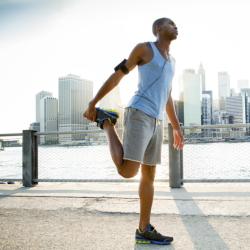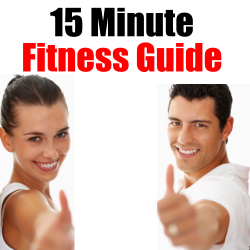One of the things you need to understand is that trying to build more muscle can take time. We’re not talking about looking like The Rock here. We’re talking about maybe adding 5 to 10 pounds of muscle mass. But the good news is, you can actually learn how to build muscle fast.
What may be slowing down your progress is that perhaps you don’t fully grasp what you need to do to build muscle. Learn to understand the basic principles of bodybuilding and you should be able to learn how to build muscle fast as well.
What to Eat to Build Muscle Fast
Nutrition plays a crucial role in building muscle. Essentially, they provide you with the “raw material” so you can have bigger muscles. So you’ll need to pay attention to what you eat. You have to keep a record, and you have to note down your caloric consumption plus your carb and protein intake.
If you really want to speed up the muscle building process, then you can’t take too much time trying to understand everything you read. It can get very confusing for you, since a lot of online “facts” on the topic are untrue or contradictory. With the help of a nutritionist, you can get a definitive diet plan which you can just follow to the letter.
You’ll also need to look into some supplements. That’s because your diet may not be able to provide you with all the nutrients you need on a consistent basis. If you can’t get enough protein from your food, then you can compensate by drinking protein shakes.
However, supplements can also boost hormone profiles or increase the amount of ATP (adenosine triphosphate) which you need for energy. Some supplements contain ZMA or creatine for this purpose. Other supplements can also have caffeine, which will give you the energy you need for your workout.
Correct Bodybuilding Exercises to Build Muscle
This is also a very confusing topic, as there are as many philosophies as there are professional trainers out there. What seems to be a unanimous belief is that you must lift weights if you want to learn how to build muscles.
Again, professional advice can really accelerate your progress, so you may want to look into hiring a personal trainer. For the most part, trainers are of the opinion that the basic exercises can give you the fastest results.
These include bench pressing, deadlifts, and squats. You can also add pull-ups and military presses. These exercises work more muscles in far less time than other exercises.
What you need to avoid is over-training. More is not always better. With over-training, you’ve dealt too much stress on your muscles and this can result in injury, a lack of progress, or the decrease in enthusiasm.
You should also try to spice things up every month or so by changing your workout routine. Simple changing the sequence of the workouts can work.
Finally, you have to improve. The weight you can lift should be more after a month. By improving, you maintain a consistent level of stress on your system.
Rest and Recreation Help Build Muscle Fast
While you toil away on your workout routine, ironically most of your muscle growth happens while you’re taking a rest. It’s during your off-training days when your muscles are recovering when you actually build muscles. This is why you mustn’t exercises the same muscles every day.
Basically, the exercises are “tearing” your muscle fibers. When you rest, your body rebuilds your muscles, and that means they can get bigger and stronger. If you are feeling some pain, you should stop and rest.
You need your rest for your muscles to recover. It’s estimated that muscles need as much as 72 hours of rest after a workout session.
So getting enough sleep is a must. You need to learn to relax, so that your body doesn’t produce too much cortisol which encourages your body to burn muscle and store fat.
If you still don’t get some improvement after following these tips, then a visit to the doctor may also help. You may have an underlying health condition that keeps you from building muscle.
You just have to keep in mind that even with these tips, it will still take some time to get the physique you want. You can’t expect super quick results. You just need to go at it and persevere. At least with these tips on how to build muscle fast you will be able to achieve the results you want in the shortest time possible.


 Jumping Rope Is a Great Idea For Losing Weight
Jumping Rope Is a Great Idea For Losing Weight






